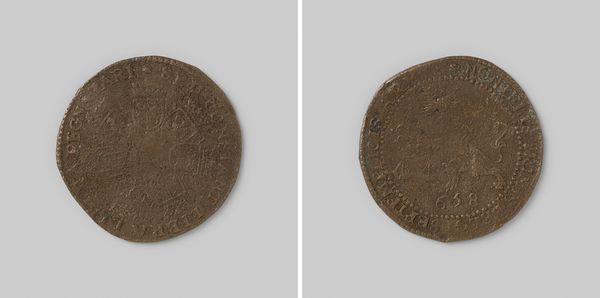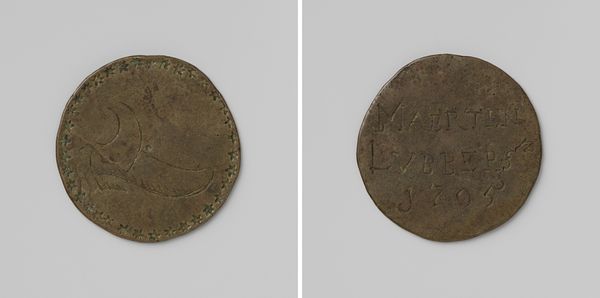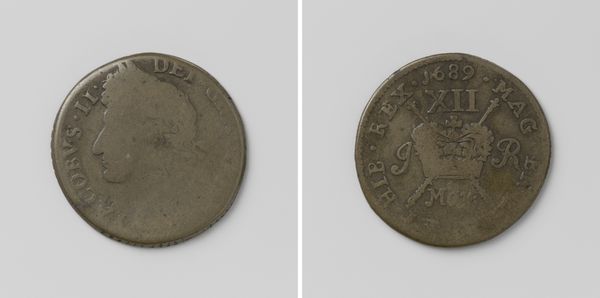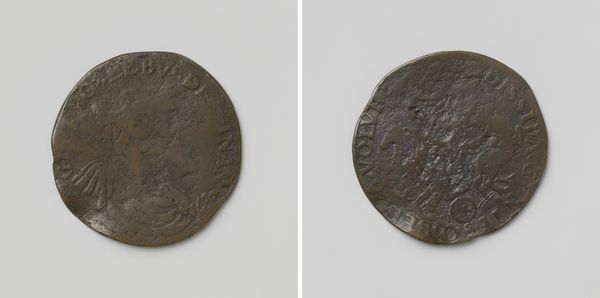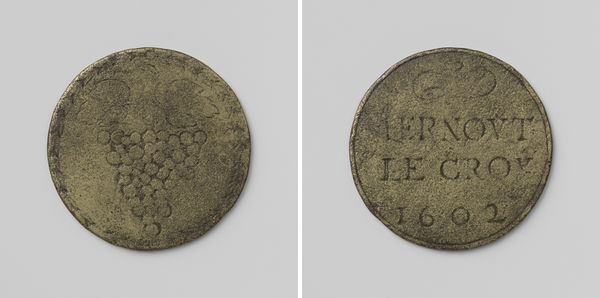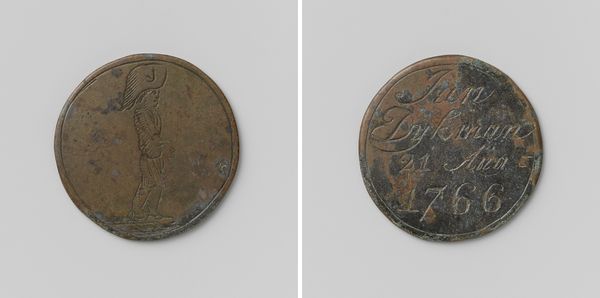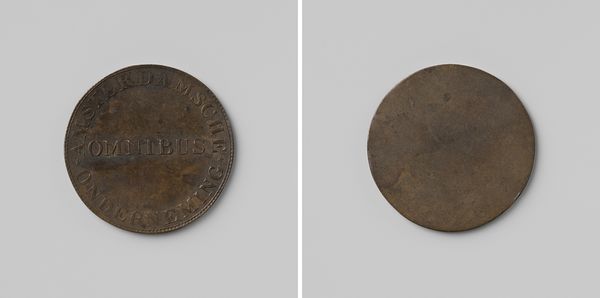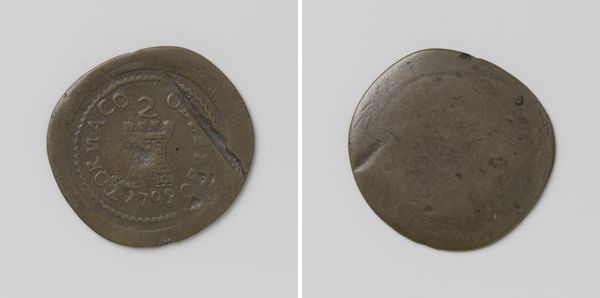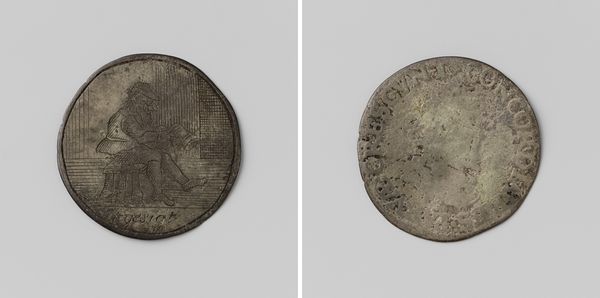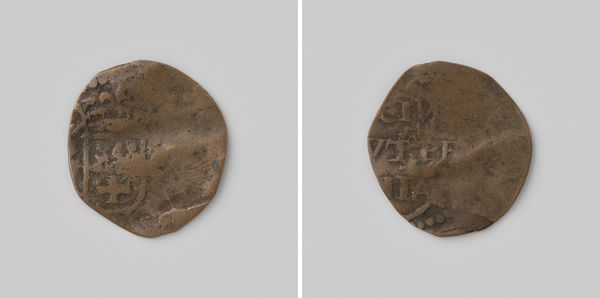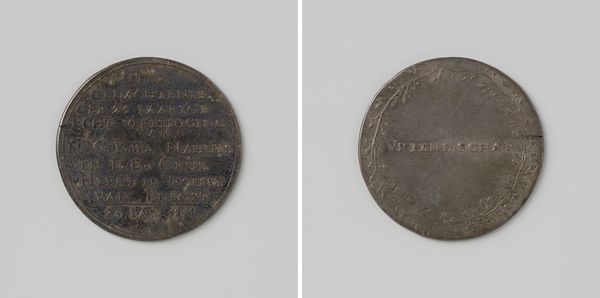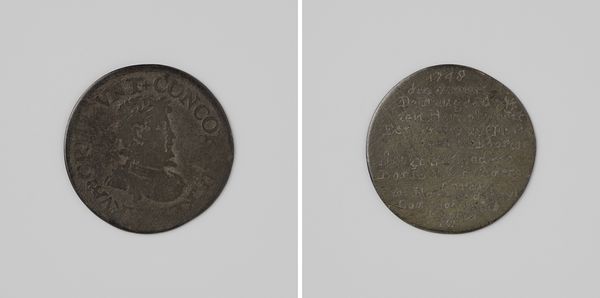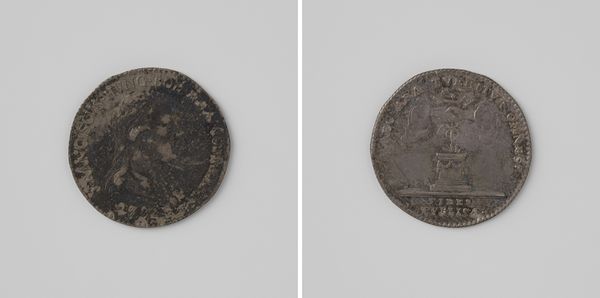
Halve crown, noodmunt van Jacobus II, koning van Engeland, uit mei 1690 1690 - 1695
0:00
0:00
mixed-media, print, metal, relief, engraving
#
portrait
#
mixed-media
#
baroque
# print
#
metal
#
relief
#
engraving
Dimensions: diameter 2.8 cm, weight 8.41 gr
Copyright: Rijks Museum: Open Domain
Curator: This piece, dating from 1690 to 1695, is a halved crown. It functioned as emergency money during the reign of James II, King of England. Editor: Immediately, the coin strikes me with its dual nature; the wear speaks to the desperate times when even symbols of power were devalued and put into the service of everyday survival. It's almost sad. Curator: These 'noodmunten,' or necessity coins, really illuminate the social and political turmoil of the time. James II was deposed in 1688, and this coin likely represents attempts to maintain some economic function in areas still loyal to him, primarily Ireland. Editor: I’m drawn to the imagery – the effigy of the king, even in this worn state, is evocative. It attempts to convey permanence and authority, while the coin's fragmentation suggests the opposite: disruption and uncertainty. Is there a significance in cutting it in half specifically? Curator: It's partly pragmatism – smaller denominations were needed, and existing coins were the fastest way to produce them. Also, debasing coinage has historical precedents during crises; less precious metal is needed, but public trust erodes. This example embodies a collapse in social trust. Editor: The symbolic violence of literally cleaving the king's image – did contemporaries perceive that as a challenge to his divinely ordained authority? Was it purely economic necessity, or a more potent statement about legitimacy in a period of crisis? Curator: Absolutely, the symbolic dimension is key. In propaganda, coinage embodies the sovereign. So damaging or defacing the monarch's effigy is a direct assault. That being said, during a war people are primarily concerned about money to survive, so this act carries symbolic as well as practical significance. Editor: The craftsmanship too, however basic, tells its own story. This wasn’t minted to inspire awe, like Baroque court portraits. The act of engraving and stamping the original coin reveals something urgent in its duplication and subsequent division. Thanks to the process the artwork shows continuity, it speaks to me. Curator: Considering it in that light offers another understanding. Necessity art indeed, forged by crisis. Editor: A fascinating object—both a humble artifact and a mirror reflecting turbulent times. Curator: Yes, examining how these small, everyday objects gained and lost symbolic meaning offers insight into socio-political crises, for example this currency of desperation.
Comments
No comments
Be the first to comment and join the conversation on the ultimate creative platform.
